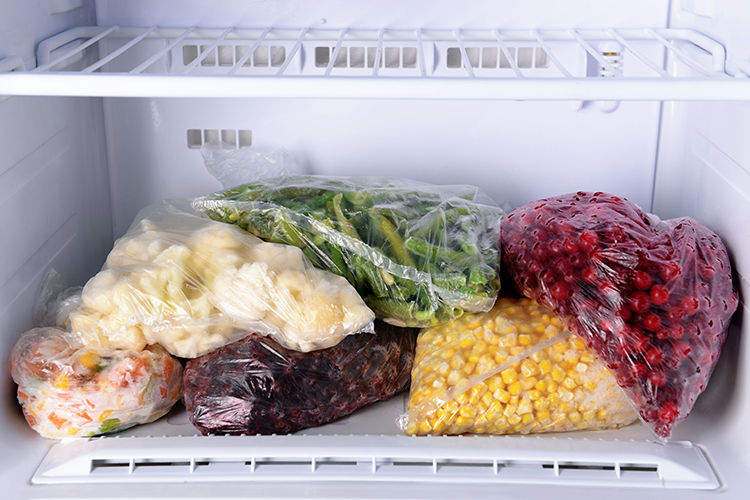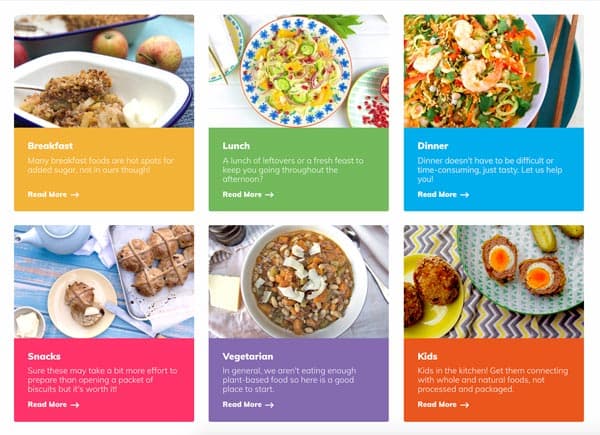Blog
Eating healthy on a budget
 There is a lot of dietary advice going around about what is considered healthy and what is not (with much of it conflicting).
There is a lot of dietary advice going around about what is considered healthy and what is not (with much of it conflicting).
It is easy to feel overwhelmed, especially when you see the exorbitant price of the latest edible cure-all! So, despite dietary and health aspirations, it is no surprise we often stick to tried and true packaged and processed foods that are typical of the Western-style diet. They are easy to prepare, taste good and cheap.
While a little packaged food is fine, or for the short-term, eating this way over a longer period will ultimately do more harm than good.
So, we are here to help! Here are ideas on how you can eat well, boost health and feel satisfied, without you remortgaging the house.
Healthy foods can be affordable and accessible
There is a commonly held belief that eating healthy is an option only for those with spare cash to splash on fancy superfoods found only at fancy health food stores. While we understand there are some who reside in ‘food deserts’ – locations with little to no direct access to fresh food – most of us in Australia do our shopping at a major supermarket. With that in mind, we ensure all our recipes and advice offered in books, ebooks and on our website can be accessible and affordable to most. Not everyone can indulge in a daily acai berry, mesquite cacao sprinkle, super-greens-powder smoothie bowl! Nor do we need such exotic ingredients to eat well and be healthy. While such foods have value, so do the familiar whole foods commonly found in your local supermarket.
With that in mind, here are our suggestions on how to eat healthy on a budget.
One: Beef out with beans
Some people have a natural aversion to legumes, but when properly prepared, it is worth letting these into your life.
Meat is one of the more expensive household food items.1 Save cash by subbing some out for lentils, cannellini or black beans in your bolognese, chicken pie or lamb stew. Your meals will go further and you’ll be supplied healthy sources of protein, fibre and a variety of micronutrients, without hurting the back pocket.
Please note: If you are not accustomed to eating legumes and experience side-effects such as bloating or excessive gas after consuming, introduce them into your diet in gradual amounts until you adapt and find them easier to tolerate, and ensure you prepare them properly. For example, dried black beans can be soaked overnight, rinsed well, and cooked for 45-60 minutes in a fresh water. This helps break down some of the indigestible oligosaccharides that the microbes in our intestine struggle to digest for us. (When gut bugs can’t digest something, it generally sits in the intestine and ferments, creating gas. Lovely.)
Two: Go bulk and embrace frozen
On the topic of beans and legumes, buying these dried and in bulk can save pretty pennies. Other foods to buy in bulk include cheap cuts of meat (great for a casserole or curry), nuts and seeds. Store meat the freezer and nuts and seed in tightly sealed containers in a cool, dark cupboard, for up to three months.
Frozen vegetables and fruits can be cost effective and can be bought in large quantities and stored in the freezer for up to a year. You can take only the amount you need for each meal, reducing food waste.
On the whole, nutritional value is retained in frozen vegetables and fruit, however, small caveat is that some foods (vegetables particularly) are blanched prior to freezing. This will reduce nutritional value, especially of heat sensitive nutrients such as vitamin C. To mitigate this, try to ensure you have a mix of fresh and frozen in each meal.
Three: Portion for the veg
Make half your plate vegetables. They are packed with much-needed nutrition and a great source of fibre to keep you fuller for longer.
Having more veg on your plate also means you can bump out ultra-processed foods such as mass-produced packaged white bread, and treat animal products as a condiment, not the centre of the meal. Vegetables are far better for your health than highly processed, refined foods and are generally cheaper than meat.
Then eat slowly and only what you need, not until you are gut-achingly full.
Opt for vegetables that are in season and grown locally, as these are often more affordable and nutritious, too.
Four: Salvage what you can!
Wherever you can, try not to waste your food! Save and store leftovers and freeze excess produce. Make the leftovers of existing meals into new meals and keep vegetable scraps and bones from meat for making your own stock. Not only do you reduce waste and save money, it is better for the environment, too. Great!
Five: Consider your spend
Are you willing to prioritise the food for yourself (and whoever you feed) over other things in your life? We aren’t talking about fundamentals, like toothpaste, but consider putting the cash spent on a Krispy Kreme or that extra glass of wine at the pub on a Friday, for example, toward better quality whole foods on your next round at the supermarket. Check out our suggestions on investing in whole foods for healthier creations in the kitchen.
Nutritional bang for your buck
Other tips are planning your meals and shopping lists before you hit the shops, and do not shop when hungry. Eating seasonally and making food from scratch can often be cheaper and will be better for you. Good staples to have in your kitchen to build meals around include free-range eggs, tinned or dried beans, lentils and chickpeas, frozen fruit and vegetables, yoghurt, vinegar, olive oil, herbs and spices, whole oats, and whole grains.
Another very cool thing to consider in all this? Eating better now will save health costs in the long-term (and in some cases, the short-term!). While food products containing highly processed industrial oils and added sugars are high in energy, momentarily satisfying, and initially appear to be cheaper than whole foods, it has been found they may be at least 20 times less nutritious than real whole foods, and excess intake can lead to all kinds of costly health problems.1
We need to eat for nourishment, not energy alone.
And you will be pleased to know, that research does indicate that healthier, nutritious foods are cheaper in the long-term overall.2
By Angela Johnson (BHSc Nutr Med)
References:
- Connell, CL, Zoellner, JM, Yadrick, MK, Chekuri, SC, Crook, LB, & Bogle, ML 2012, ‘Research Brief: Energy Density, Nutrient Adequacy, and Cost per Serving Can Provide Insight into Food Choices in the Lower Mississippi Delta’, Journal of Nutrition Education and Behavior, vol. 44, pp. 148-153.
- Carlson, A & Frazão. E 2012, ‘Are Healthy Foods Really More Expensive? It depends on how you measure the price’, S. Department of Agriculture, Economic Research Service.











